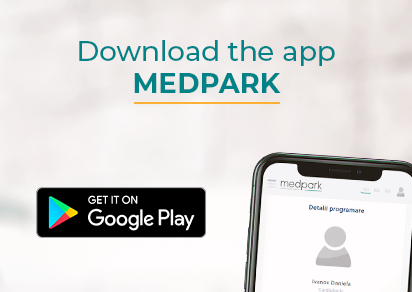Neurosurgery is the surgery of the nervous system. Most people think of neurosurgery as a brain surgery, but it is much more!
Neurosurgery is the medical specialty concerned with diagnosis and treatment of the diseases/disorders and traumas of the brain, spinal cord and column, and peripheral nerves within all parts of the body.
Neurosurgical treatment can be either surgical or conservative. It depends on the character of the disorder and the general state of health of the patient. Such problems can be the result of abnormal growth since birth (congenital), aging or “wearing out” (degenerative), traumatizing after an injury, infection caused by certain bacteria or viruses, a tumor, or can be caused by other medical conditions or diseases.
Who is the neurosurgeon and what is his job?
Neurosurgeons are not just surgeons operating on the brain; they are specialists that can help in treatment of the lower back pain and a wide range of other diseases from trigeminal trauma to head and spine injuries.
Neurosurgeons provide the operative and non-operative management of the disease, which means prevention, diagnosis, evaluation, treatment, and rehabilitation after neurological disorders.
Neurosurgeons have extensive training in the diagnosis of all neurological diseases, which is why they often work with referring doctors, including primary care physicians, neurologists, internists, family practitioners and physiotherapists.
What disorders do neurosurgeons treat?
- Tumors affecting the brain, spinal cord, nerves, skull or spine. They can be primary – formed in the local tissues or secondary – metastatic cancer cells spread from another part of the body.
- Spinal problems, such as pain in the lumbar, thoracic or cervical region of the spine, nerve compressions with the emergence of pain, numbness or weakness in the arms or legs. This may be the result of herniated intervertebral disc or protrusion, sliding vertebrae – spondylolisthesis, infections or fractures.
- Disorders or peripheral nerve compressions, which can manifest as pain, numbness, weakness and atrophy of the muscles of the face, arms, hands or legs. Pathologies such as carpal tunnel syndrome are common when the nerve is compressed when crossing the wrist.
- Cerebrovascular disorders such as stroke, brain hemorrhage, aneurysms, vascular malformations, traumatic or non-traumatic hematomas, which affect the brain or spinal cord and carotid artery stenosis.
- Brain disorders, such as epilepsy, hydrocephalus or innate diseases.
- Brain and spinal cord infections, infections of cerebrospinal fluid surrounding these structures, or vertebrae, or intervertebral disc.
- Traumas of brain, spine, bones, spine, nerves and skull.
Neurosurgical procedures performed at Medpark
Below there is a list of surgical procedures performed in the Neurosurgery Center at Medpark:
Cerebral pathologies
- Brain tumors (acoustic neuroma, brain glioma, brain meningioma, pituitary adenomas, chondroma)
- Hydrocephalus (temporary external drainage, ventricular-peritoneal by-pass)
- Non-traumatic intracerebral hemorrhage (craniotomy to remove intracerebral hematoma, trepanation for bleeding control and draining)
- Trigeminal neuralgia (craniotomy for microvascular decompression)
Infections (external ventricular drainage for antibiotic treatment, craniotomy to remove the abscess) - Craniocerebral injuries (craniotomy for evacuation of intracranial, hematoma, external ventricular drainage, craniotomy with excision of foreign body from brain, skull bones reconstruction)
- Sequelae of craniocerebral injuries (cranial bones cranioplasty, econstruction of CSF fistula)
- Malformations (suboccipital decompression for Arnold Chiari malformation)
Neurovascular pathologies
- Aneurysms (aneurysm clipping, endovascular embolization (coiling))
- Arteriovenous malformations (craniotomy for ablation or obliteration of AVM)
- Carotid artery stenosis (carotid endarterectomy, extra-intracranial vascular anastomosis (by-pass), carotid artery endovascular stenting)
Spinal pathologies
- Hernias of the intervertebral discs (microendoscope discectomy (lumbar, thoracic, cervical), percutaneous discectomy, laminotomy and/or laminectomy, stabilization or fusion, minimally invasive procedures, epidural/paravertebral block)
- Spinal stenosis (decompression and stabilization if necessary)
- Intervertebral implants (intervertebral fusion with or without titanium plate)
- Occipito-cervical fusion (trauma / fractures, stabilization with decompression and fusion, reconstructive procedures, vertebroplasty with or without kiphoplasty)
- Spondylolisthesis – dislocation of vertebrae (stabilization/surgical fusing, minimally invasive procedures)
- Infections (decompression and sanation, stabilization, reconstructive procedures)
Spinal cord pathologies
- Tumors (laminectomy for the ablation of the tumor)
- Compressions (decompression with stabilization/fusing, vertebrectomy with reconstructive fusing)
- Spinal cord injuries (decompression with stabilization)
- Infections (biopsy, decompression with stabilization if necessary)
- Malformations (AVM treatment, Syringomyelia cavity drainage)
Peripheral nerve pathologies
- Traumatisms (debridement, repair and grafting)
- Carpal Tunnel syndrome (neurolisys nerve decompression)
- Cubital Tunnel syndrome (neurolisys nerve decompression)
- Tumors (peripheral nerves tumor ablation)
Why choose Neurosurgery at Medpark?
Medpark strictly adheres to International Medical Standards, which guarantees medical safety and the best treatment results. The Medpark Infrastructure offers exceptional conditions for the diagnosis and surgical treatment of patients, namely:
- Ultramodern operating room, equipped with a microscope of high resolution, brain and spinal neuroendoscope, craniotome and performant imaging equipment (intraoperative X-ray device C-Arm, CT, MRI, and angiography). These devices allow the doctors’ team to face any challenges through multidisciplinary approach to rapid diagnosis, immediate initiation of surgical or conservative treatment and personalized rehabilitation.
- Operating rooms equipped with continuous sterilized airflow and hermetic doors that minimize the risk of in-hospital infections. Air sterility also ensures rapid postoperative recovery of patients (a few days earlier than in other hospitals), the risk of complications due to infections is minimal;
- Positive pressure – higher pressure sterile air is directed to the operation table, especially over the incision, so the surrounding air (for example, the breathing of the medical staff) does not hit the wound – ensuring sterility and minimal risk of infection or post-operative complications;
- Cell-saver – autotransfusion system. The blood of the patients is transfused to themselves, so they have no contact with someone else’s blood;
- Hemofiltration to clean patient’s blood, applied post-operatively in complicated cases;
- Postoperative care at international standards and complex treatments with rapid rehabilitation;
- Applying the concept of “pain-free hospital”, providing anesthesia and analgesia individualized to each patient, maximum efficacy and minimal risk;
- 63 modern one-patient rooms in the inpatient department, each equipped with a functional bed, own bathroom, foldable bed for the attendant, WiFi, TV, etc., and medical staff always available, for patient comfort and safety.



